| Type NA | |
|---|---|
 | |
| Role | Fighter aircraft |
| National origin | Sweden |
| Manufacturer | AB Thulinverken |
| Designer | Enoch Thulin |
| First flight | April 1919 |
| Number built | 1 |
The Thulin NA was a prototype Swedish fighter plane built in the late 1910s.
| Type NA | |
|---|---|
 | |
| Role | Fighter aircraft |
| National origin | Sweden |
| Manufacturer | AB Thulinverken |
| Designer | Enoch Thulin |
| First flight | April 1919 |
| Number built | 1 |
The Thulin NA was a prototype Swedish fighter plane built in the late 1910s.
The Thulin NA was a two-seat biplane based on the Thulin N. Both the upper and lower wings were fitted with knuckles which were connected by a push rod. The fuselage was provided with an open cockpit where one was placed in a tandem location. The fuselage is made of a lattice construction of welded steel pipes . The wheel ground was fixed with a spur spring under the height knob.
The Type NA was the last aircraft built by AB Thulinverke. Although it first flew in April 1919, the poor market demand after WW1 meant that the Type NA did not enter production.
Data from [1]
General characteristics
Performance
Related lists

The Albatros B.II, was an unarmed German two-seat reconnaissance biplane of the First World War.

The Morane-Saulnier L, or Morane-Saulnier Type L, or officially MoS-3, was a French parasol wing one or two-seat scout aeroplane of the First World War. The Type L became one of the first successful fighter aircraft when it was fitted with a single machine gun that fired through the arc of the propeller, which was protected by armoured deflector wedges. Its immediate effectiveness in this role launched an arms race in fighter development, and the Type L was swiftly rendered obsolete. The original Type L used wing warping for lateral control, but a later version designated Type LA was fitted with ailerons.

The North American Aviation NA-16 was the first trainer aircraft built by North American Aviation, and was the beginning of a line of closely related North American trainer aircraft that would eventually number more than 17,000 examples, notably the T-6 Texan family.
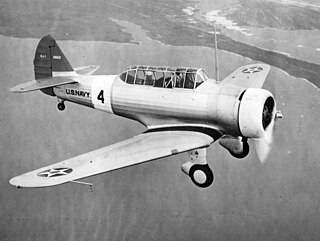
The North American BT-9 was the United States Army Air Corps (USAAC) designation for a low-wing single engine monoplane primary trainer aircraft that served before and during World War II.
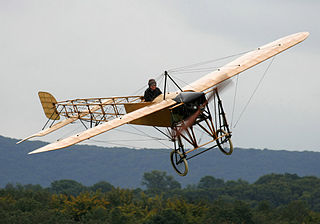
The Blériot XI is a French aircraft from the pioneer era of aviation. The first example was used by Louis Blériot to make the first flight across the English Channel in a heavier-than-air aircraft, on 25 July 1909. This is one of the most famous accomplishments of the pioneer era of aviation, and not only won Blériot a lasting place in history but also assured the future of his aircraft manufacturing business. The event caused a major reappraisal of the importance of aviation; the English newspaper The Daily Express led its story of the flight with the headline "Britain is no longer an Island".
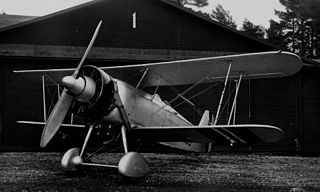
Svenska Aero Jaktfalken ("Gyrfalcon") was a Swedish biplane fighter aircraft, constructed in the late 1920s. The aircraft was first manufactured by Svenska Aero and later by AB Svenska Järnvägsverkstädernas Aeroplanavdelning (ASJA).

The Thulin LA was a Swedish two-seat, single-engine biplane designed by Enoch Thulin in 1917 and made by his company AB Thulinverken in Landskrona. It was based on the earlier Thulin L and E aircraft, with a new engine, fuselage and empennage. The L and E types were in turn based on the German Albatros B.II aircraft, like the NAB Albatros. The Thulin LA was used in Sweden, the Netherlands (10) and Finland (1). This type also made the first passenger transport flights between Sweden and Denmark in 1919. Altogether there were 15 Thulin LAs built.

The Avro Type D was an aircraft built in 1911 by the pioneer British aircraft designer A.V. Roe. Roe had previously built and flown several aircraft at Brooklands, most being tractor layout triplanes. The Type D was his first biplane.

The Avro Type E, Type 500, and Type 502 made up a family of early British military aircraft, regarded by Alliott Verdon Roe as his firm's first truly successful design. It was a forerunner of the Avro 504, one of the outstanding aircraft of the First World War.
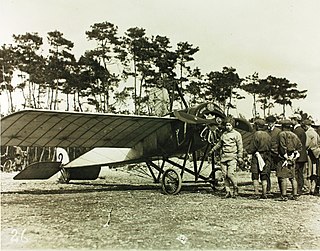
The Morane-Saulnier G was a two-seat sport and racing monoplane produced in France before the First World War. It was a development of the racing monoplanes designed by Léon Morane and Raymond Saulnier after leaving Borel and, like its predecessors, was a wire-braced, shoulder-wing monoplane. Construction was of fabric-covered wood throughout, except for the undercarriage struts which were of steel tube.
The Thulin K was a Swedish naval fighter aircraft in the 1910s. It was operated by both the Swedish and Dutch armed forces.
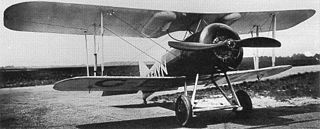
The Gloster Grouse was a British biplane of the 1920s developed by the Gloster Aircraft Company. Often referred to as the prototype to the Gloster Grebe, the Grouse originally built as an experimental aircraft and then later developed as a trainer. Despite its compact design and maneuverability, the Grouse was not in itself a commercial success, although it formed the basis for the Gloster Grebe and Gamecock fighters which were used by Britain's Royal Air Force into the 1930s.

The Eon Olympia was a glider produced from 1947 by Elliotts of Newbury.

The Kyushu K10W Type 2 Land based intermediate trainer was a single engine low wing fixed undercarriage monoplane training aircraft which served in the Imperial Japanese Navy Air Service in the latter part of World War II.

The FVM Ö 1 Tummelisa is a single seat, single engine Swedish biplane from the 1920s. It was operated by the Swedish Air Force as its advanced trainer until the mid-1930s.
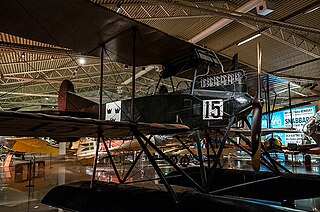
The Thulin G was a Swedish military reconnaissance aircraft built in the late 1910s.
The Thulin N was a prototype Swedish scout aircraft built in the late 1910s.
The Thulin L was a Swedish reconnaissance plane built in the late 1910s.

The Thulin E was a Swedish reconnaissance aircraft built in the late 1910s.

The Thulin FA was a Swedish reconnaissance aircraft built in the late 1910s.